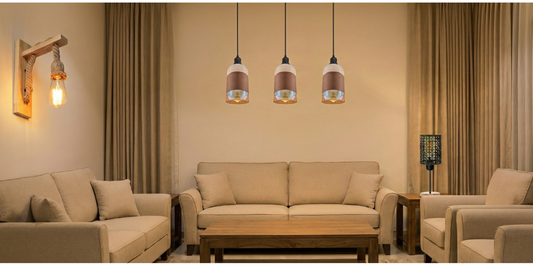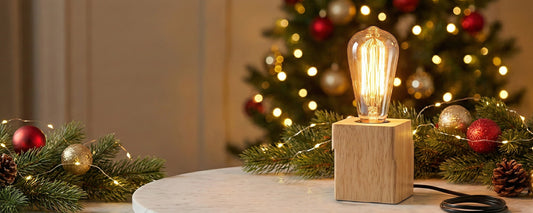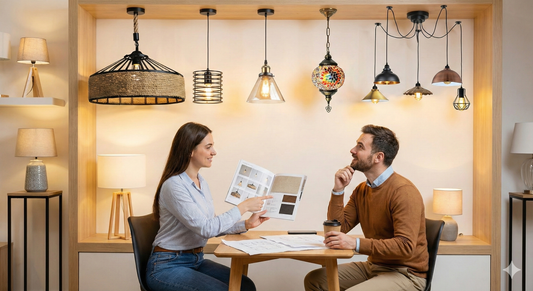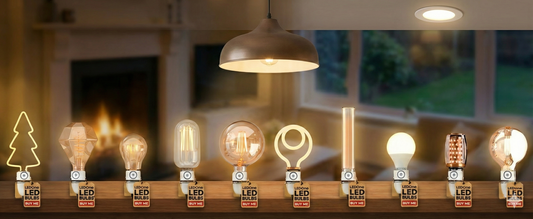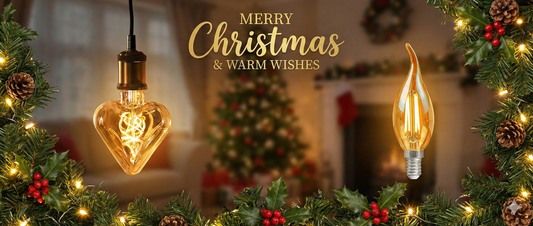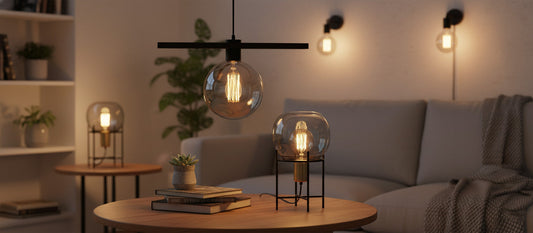
Wall Lighting Ideas Living Room
Looking to elevate your living room design? The secret could be in your wall lighting. From sleek modern sconces to vintage-inspired fixtures, wall lights for living rooms don't just add brightness—they create atmosphere, highlight décor, and bring a touch of sophistication to your space. Whether you're aiming for a cosy reading nook or a dramatic feature wall, the right living room wall lighting can completely transform your interior. Discover how the perfect lighting choice can tie your room together and turn a finished setup into a truly inviting retreat.
Why Wall Lights Are Having a Major Moment in 2025
Wall lights are finally getting the attention they deserve—and it’s long overdue.
Lighting is no longer just something you think about at the last minute. More and more homeowners are using wall lights as stylish features that help shape the whole feel of a room. Why? Because they’re the key to that cosy, elegant look we often see on Instagram.
So, what makes wall lights so special?
It’s all about layering. Ceiling lights brighten up the whole room, and floor lamps make corners feel snug. Wall lights sit in between—they add depth, reduce harsh shadows, and bring balance to the space.
There’s also a bit of psychology involved. Wall lights create what designers call "human-scale lighting". That means light that feels warm, friendly, and personal—not cold or clinical. When you step into a room with well-placed wall lights, it instantly feels more inviting and stylish.
Master the Four Types of Wall Lighting (Like a Pro Designer)
Here’s where many people go wrong: They assume all wall lights do the same job. But interior designers know better—there are four main types of wall lights, and each one has its own unique purpose. Once you understand the difference, it can completely change how you light your space.
| The Designer's Guide to Wall Lighting Types | |
|---|---|
| Ambient Lighting | Your room's main character energy. These fixtures wash walls with soft, diffused light that makes everything feel warm and inviting. Think of them as your space's mood ring—they set the emotional tone for the entire room. |
| Task Lighting | The workhorses of wall lighting. Swing-arm reading lights, vanity sconces, and under-cabinet strips fall here. They're laser-focused on function but can look incredibly stylish while doing their job. |
| Accent Lighting | The show-offs (in the best way). Picture lights that make your art pop, architectural uplights that highlight beautiful molding, and statement sconces that become conversation starters. These are your room's jewelry. |
| Decorative Lighting | Pure eye candy. These fixtures are chosen primarily for their visual impact. A stunning Art Deco sconce or a sculptural modern fixture that's beautiful even when turned off. Function is secondary to form here. |
The magic happens when you layer these types strategically. Start with ambient for your foundation, add task lighting where you need functionality, then sprinkle in accent and decorative pieces for personality. It's like composing a symphony—each element plays its part in creating something greater than the sum of its parts.
The Wall Lighting Trends That Are Actually Worth Following
Let's talk about what's hot right now (and what's not). The lighting world moves fast, but some trends have serious staying power while others are just fleeting moments on social media.
What's Currently Crushing It:
Warm brass is having its renaissance moment. Not the shiny, builder-grade brass from the '90s, but rich, matte finishes that feel both modern and timeless. Fluted glass shades are everywhere too—they diffuse light beautifully while adding texture that photographs incredibly well.
Oversized sconces are making bold statements in 2025. We're seeing fixtures that would have seemed "too big" just a few years ago becoming the focal points of entire walls. The key is confidence—if you're going big, own it completely.
What's On Its Way Out:
Industrial black fixtures are starting to feel overdone (though classic versions will always have their place). The ultra-minimalist "invisible lighting" trend is giving way to fixtures with more personality and presence.


Get the Placement Right
This is where good intentions go to die. You've picked the perfect fixtures, but if they're hung at the wrong height or spaced incorrectly, even the most expensive sconces will look amateur. Let's fix that.
The Golden Rules of Wall Light Placement:
The 60-66 inch rule is your best friend. This is the sweet spot for most wall sconces—high enough to cast light effectively, low enough to feel human-scaled. But (and this is crucial) this rule assumes 8-9 foot ceilings. If your ceilings are higher, adjust proportionally.
For reading lights, ignore the general rules. Mount them 48-54 inches from the floor so the bottom of the shade is at shoulder height when you're seated. Your future reading-glasses-wearing self will thank you.

Spacing That Actually Works:
The biggest mistake? Treating sconces like they're afraid of each other. For hallway lighting, space them 8-10 feet apart maximum. In living areas, think about sight lines—you want them to feel intentionally placed, not randomly scattered.

| Do | Don't |
|---|---|
| Test before you commit. Use painter's tape to mark fixture locations and live with them for a few days before drilling. | Rush the installation. Moving fixtures after the fact is expensive and leaves wall damage. |
| Consider your furniture. Sconces should relate to your seating, artwork, and architectural features. | Treat wall lights as independent elements. They should feel integrated with your overall design. |
| Plan for dimming. Even decorative fixtures benefit from dimmer switches for versatility. | Forget about the switch location. Beautiful fixtures with awkward switches kill the whole vibe. |
Making It Work in Your Actual Home
Theory is great, but let's talk about real life. Your home isn't a showroom, and your wall lighting needs to work with kids, pets, daily life, and a realistic budget. Here's how to make it happen without losing your sanity.
The Realistic Room-by-Room Game Plan:
Living rooms need flexibility above all else. Start with ambient sconces on either side of your sofa or flanking a fireplace. Add task lighting where you actually read . If you have art, light it—but choose pieces you genuinely love, not just what fills the wall.


Hallways are wall lighting's best friend. A series of matching sconces creates a hotel-like sophistication that makes even narrow spaces feel intentional and expensive. Just resist the urge to make them too matchy-matchy—slight variations in height or finish can add interest.
The Budget-Friendly Reality Check:
You don't need to rewire your entire house. Plug-in wall sconces have come incredibly far and can look just as polished as hardwired options. The key is choosing ones with cords that complement your decor rather than fighting against it.


Up or Down? The Great Sconce Debate
This question comes up constantly, and the answer is simpler than you think:

Upward-Facing: Creates soft, ambient light that makes ceilings feel higher.

Downward-Facing: Provides focused light perfect for tasks and creating drama.
The truth? Both directions work beautifully when chosen intentionally. Upward light feels softer and more relaxing—perfect for bedrooms and cozy living spaces. Downward light creates more drama and works better for task-oriented areas. Many of today's best sconces do both, giving you maximum flexibility.
Your Next Move: From Inspiration to Installation

Here's the thing about wall lighting—it's one of those upgrades that delivers way more impact than you'd expect for the investment. A single well-placed sconce can make a room feel twice as expensive, while a thoughtfully planned lighting scheme can transform your entire home's atmosphere.
Start small if you're feeling overwhelmed. Add one statement sconce to your living room or a pair of reading lights flanking your bed. Live with them for a while, notice how they change your space, then build from there. Great lighting is a journey, not a destination.
The most important thing? Trust your instincts. All the rules in the world don't matter if you don't love how your space feels. Wall lighting should make you smile every time you flip the switch—anything less isn't worth your time or money.
Ready to Transform Your Space?
Browse our curated collection of wall lights designed for real homes and real budgets. From statement sconces to subtle accent lighting, find your perfect match today.
Shop All Wall LightsYour Wall Lighting Questions, Answered
How do I choose the right wall light for my home?
Think about why you need it, what style suits your home, and the right size for your space:
- Purpose: Accent lighting, task lighting, ambient lighting, or decorative.
- Style: Match with your interior look – modern, classic, rustic, Art Deco, etc.
- Size & Placement: Hang at eye level (150–165 cm) from the floor. Use paper cut-outs to check the size before buying.
What types of wall lights are there?
Common types include:
- Sconces: Versatile; can shine up, down, or both.
- Picture lights: Focus light on artwork.
- Swing-arm lights: Adjustable, ideal for reading.
- Uplighters: Send light upwards, softening the room.
- Plug-in lights: Easy to install, no wiring needed.
What lighting works best in a living room?
Use layered lighting for flexibility: ambient lighting (ceiling lights), task lighting (floor/table lamps), and accent lighting (wall sconces, picture lights). Dimmers are essential for adjusting mood.
How can I light a room without wiring?
There are several fuss-free options:
- Plug-in wall lights: Easy to mount, just plug in.
- Battery-powered lights: Puck lights, strip lights, or cordless lamps.
- Floor and table lamps: Classic plug-and-play lighting.
- USB or rechargeable lights: Handy and flexible.
Are wall sconces still in style?
Yes, wall sconces are very much in style. They are popular in both modern and traditional homes for saving space, creating mood, and adding a touch of elegance. Finishes like brass, plaster, and matt black are particularly trendy.
Should sconces face up or down?
- Upward sconces: Create soft, ambient light and make rooms feel taller.
- Downward sconces: Provide more focused light, good for reading or highlighting textures.
Choose based on the mood or function you want to achieve.
What colour light should I use in the living room?
Warm white (2700K–3000K) is best. It creates a relaxed, welcoming vibe perfect for living areas. Avoid cool white or daylight tones, which can feel harsh.




